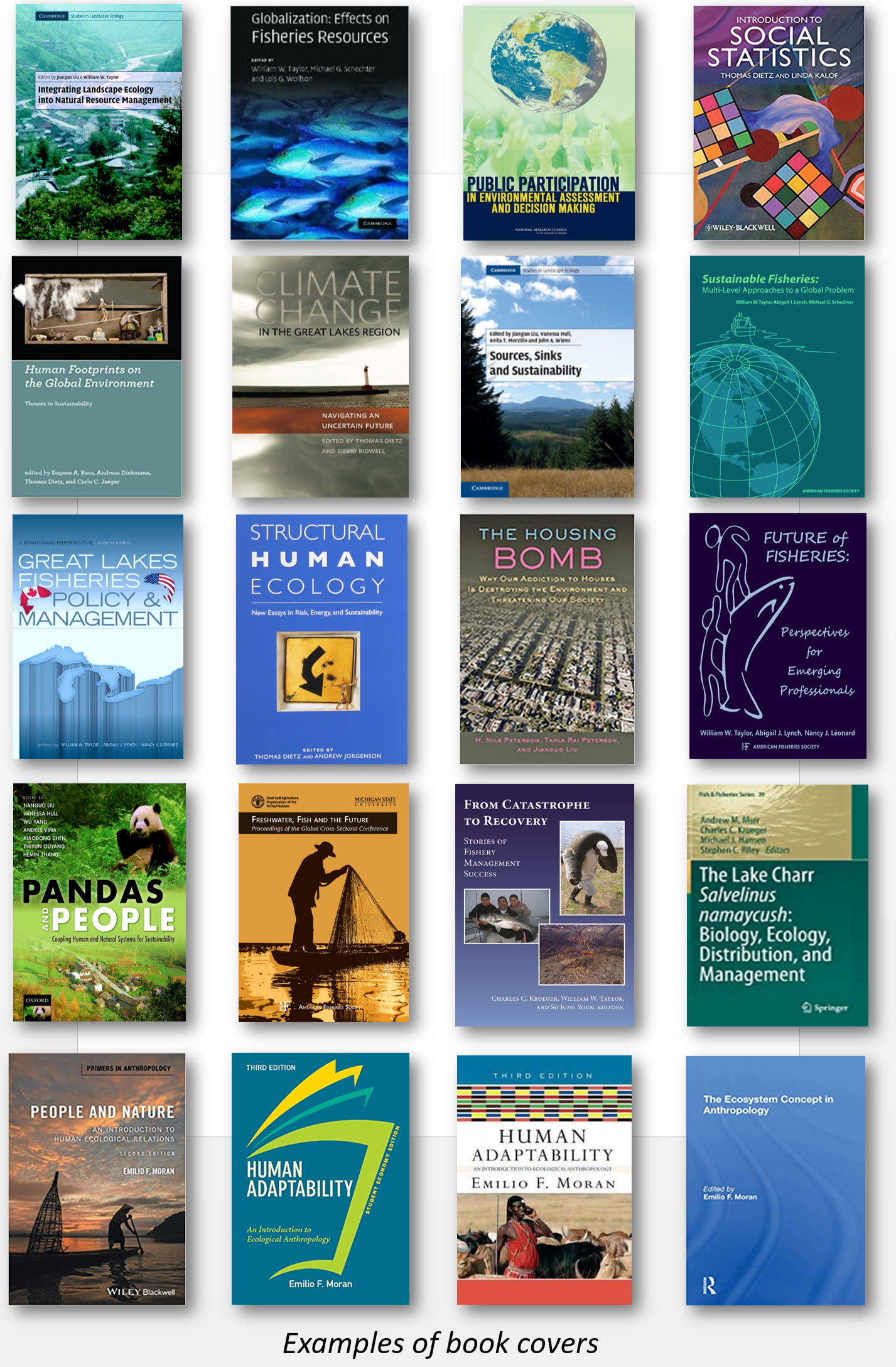Publications
Journal Articles
A list of journal articles published by CSIS members, including 3 cover stories in Nature, 24 appearances in Science, and 17 in PNAS (Proceedings of the National Academy of Sciences of the United States of America).
Books and Book Chapters
Selected books (edited books) and book chapters published by CSIS members.
Publications
-
Space use by endangered giant pandas
Published on March 29, 2015
We studied 5 giant pandas using GPS telemetry and estimated home ranges, core areas, and space use using model-based approaches. -
Hidden Benefits of Electric Vehicles for Addressing Climate Change
Published on March 19, 2015
Here we reveal two hidden benefits of EVs for addressing climate change to support the imperative acceleration of replacing CVs with EVs. -
US climate policy needs behavioural science
Published on March 11, 2015
State implementation of new Environmental Protection Agency climate regulation may shift behavioural strategies from sidelines to forefront of US climate policy. -
SCIENCE -- Systems integration for global sustainability
Published on February 27, 2015
Systems integration—holistic approaches to integrating various components of coupled human and natural systems—is critical to understand socioeconomic and environmental interconnections and to create sustainability solutions. -
Bouncing Back: Plant-Associated Soil Microbes Respond Rapidly to Prairie Establishment
Published on January 13, 2015
It is well established that soil microbial communities change in response to altered land use and land cover, but less is known about the timing of these changes. -
A synthesis of giant panda habitat selection
Published on January 12, 2015
The giant panda (Ailuropoda melanoleuca) is a global conservation icon, but its habitat selection patterns are poorly understood. -
Synchronized peak-rate years of global resources use
Published on January 7, 2015
This study has estimated the year of peak rate for multiple resources and investigated the relationships among them. -
Opinion: Building a 21st-century infrastructure for the social sciences
Published on December 12, 2014
To generate analyses will require entirely new ways to collect, and link, diverse data to improve population health, reduce environmental and social vulnerabilities, and better prepare people for the jobs of the future. -
Impacts of people and tigers on leopard spatiotemporal activity patterns in a global biodiversity hotspot
Published on December 9, 2014
Continuing to evaluate the interconnections among leopards, tigers, prey, and people across different land management regimes is needed to develop robust landscape-scale conservation strategies. -
Lake trout in northern Lake Huron spawn on submerged drumlins
Published on November 25, 2014
Understanding the role of glacially-derived bedforms may help develop powerful predictors of lake trout spawning locations, provide insight into the evolution of unique spawning behaviors by lake trout, and aid in lake trout restoration in the Great Lakes. -
Use of oviduct-inserted acoustic transmitters and positional telemetry to estimate timing and location of spawning: a feasibility study in lake trout, Salvelinus namaycush
Published on November 25, 2014
Three assumptions were tested: (1) oviduct transmitters remain within fish until spawning, (2) oviduct transmitters are expelled with the eggs during spawning, and (3) time and location of oviduct transmitter expulsion can be accurately determined. -
New insight into the spawning behavior of lake trout, Salvelinus namaycush , from a recovering population in the Laurentian Great Lakes
Published on November 25, 2014
The model presented in this paper is intended as a working hypothesis, and further revision may become necessary as we gain a more complete understanding of lake trout spawning behavior. -
Ecomorphological Diversity of Lake Trout at Isle Royale, Lake Superior
Published on November 24, 2014
Four Lake Trout Salvelinus namaycush morphs were identified from Isle Royale, Lake Superior; the morphs differed in shape, traits linked to feeding and locomotion, buoyancy, and physical habitat use. -
Characterizing coal and mineral mines as a regional source of stress to stream fish assemblages
Published on November 24, 2014
The associations between co-occurring stream fish assemblages and densities of various “classes” of mining occurring in the same catchments were tested using threshold analysis. -
Reproductive life-history strategies in lake whitefish ( Coregonus clupeaformis ) from the Laurentian Great Lakes
Published on November 24, 2014
Recent food-web changes in the Laurentian Great Lakes are affecting energy and nutrient allocation to lake whitefish (Coregonus clupeaformis) with potential downstream effects on egg condition and recruitment -
Rethinking China's new great wall
Published on November 21, 2014
China’s position as the world’s second largest economy is largely due to its rapid economic growth in the coastal region, which comprises only 13% of China’s total land area, yet contributes 60% of the GDP -
Pandas, Plants, and People
Published on November 20, 2014
Our synthesis shows that many human factors, including socioeconomic and demographic, together with other factors (e.g., projected global climate change), exhibit reciprocal interactions with pandas and the plant species that comprise their habitat. -
How trophic interactions can cause second-order effects of marine reserves
Published on November 11, 2014
The effects of marine reserves on fish populations may be more complex than previously thought with trophic interactions important in structuring populations. -
Remote sensing support for hypothesis of sustainable tourist valorisaion and fruition of the Southern Sinai National Parks (Red Sea, Egypt)
Published on November 11, 2014
The Sinai Peninsula is one of the most important tourists’ magnets for the sacred Shrines (St Katherine Monastery) and ecologically-valued landmarks (the coral of Aqaba). The most interesting flora and fauna are not terrestrial, but aquatic. -
Artisanal fisheries and NTZs in Nabq, Egypt: effect on gleaned molluscs and reef top benthic assemblages
Published on November 11, 2014
To assess the effects of these NTZs on gleaned molluscs and on the reef top benthic assemblages, a survey of edible molluscs was undertaken within NTZs boundaries, and in four adjacent fished areas.





 Print
Print Email
Email